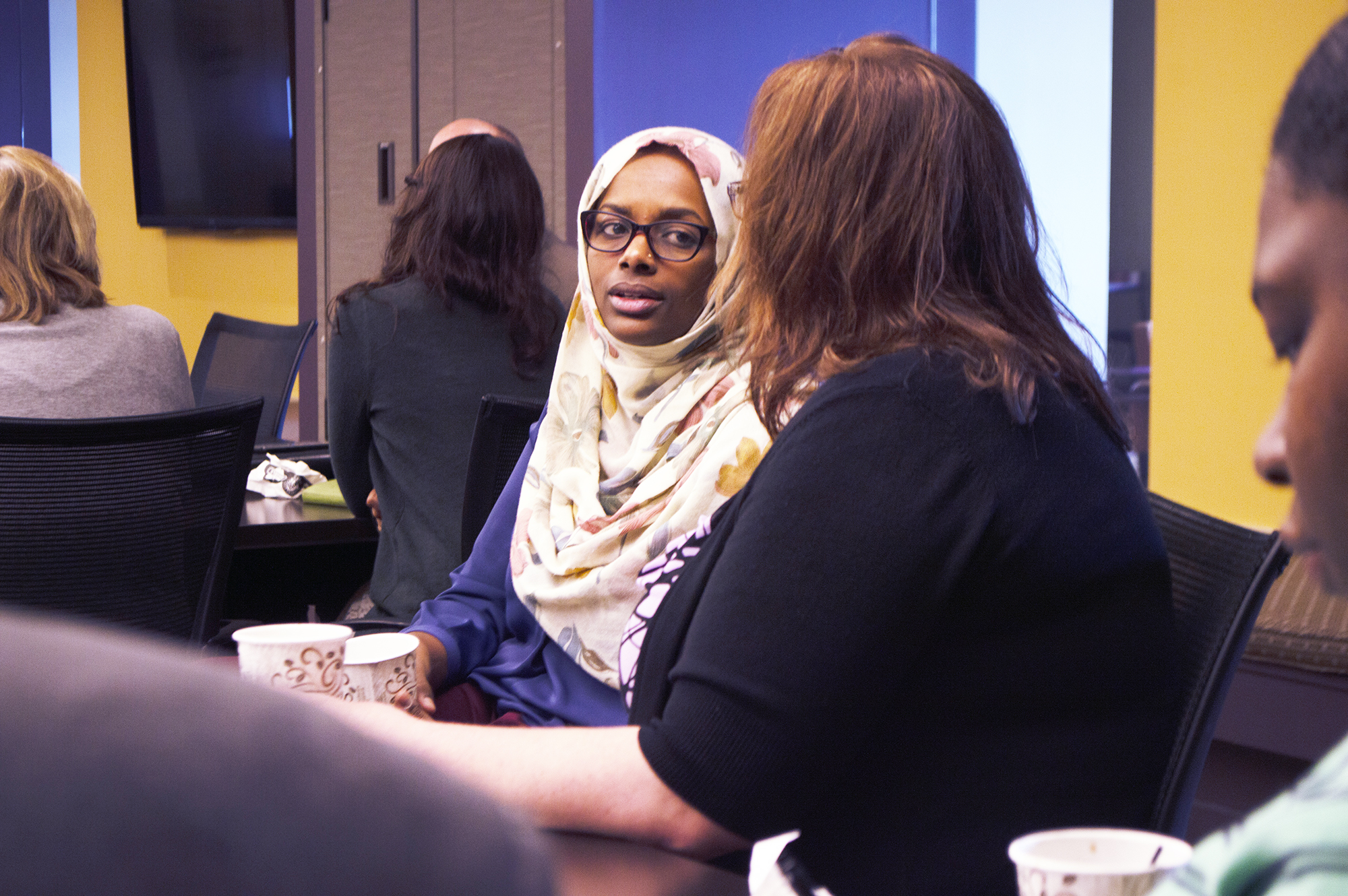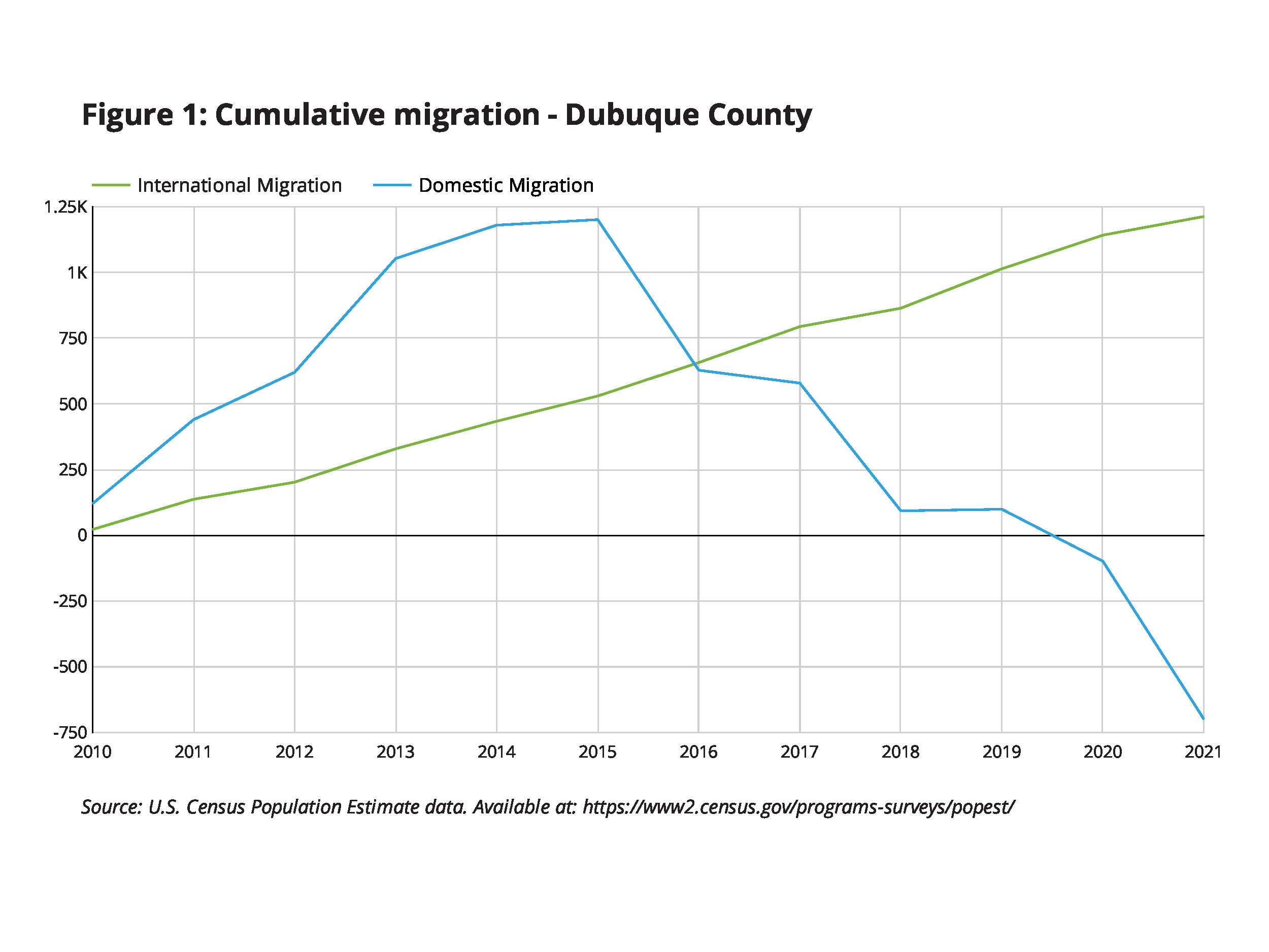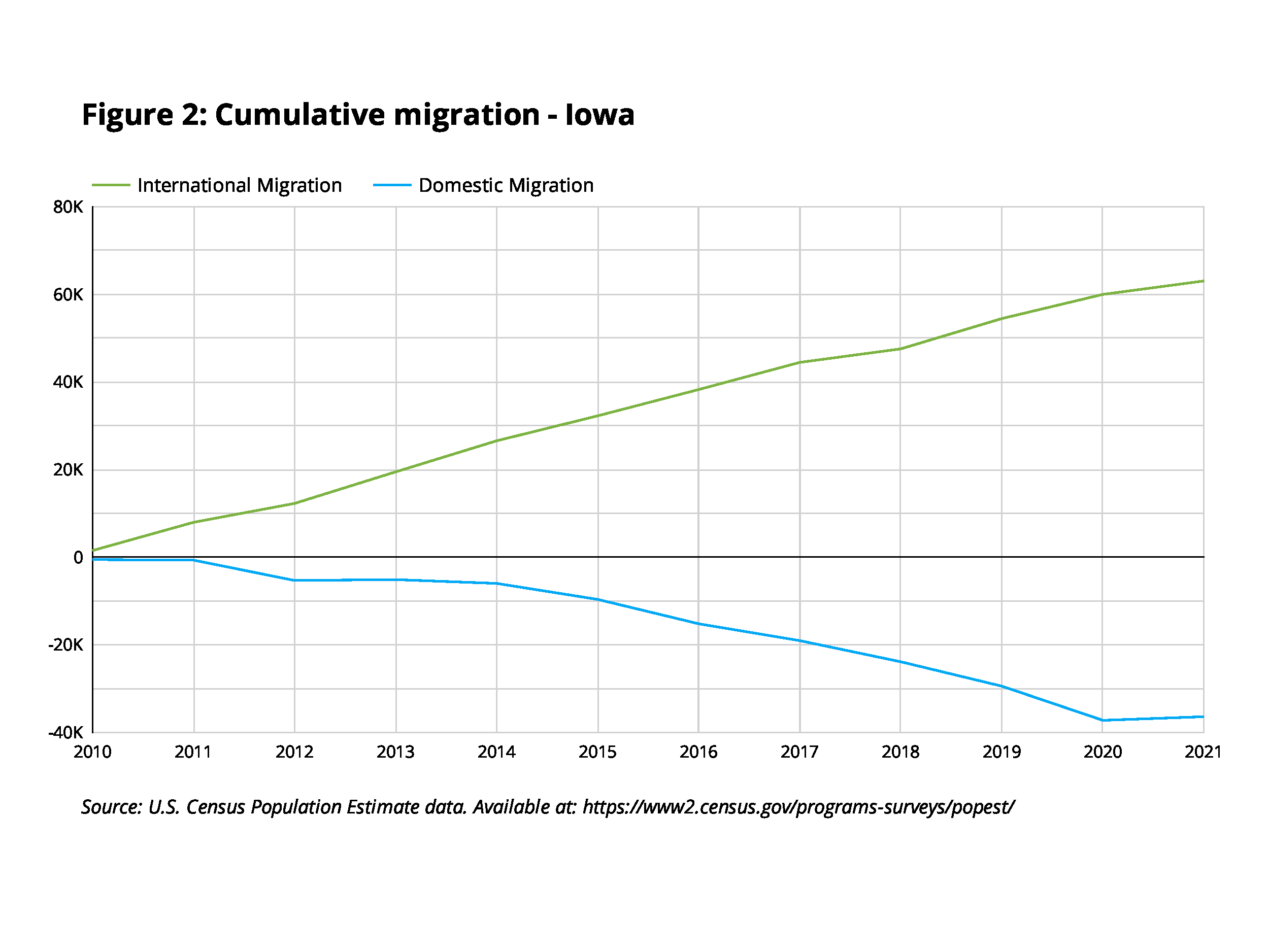Introduction

Immigration has played a critically important role in shaping the region’s demographic reality. Over the past decade domestic migration has declined significantly for Dubuque County, with more people leaving for other parts of the country than moving here. The trend has been even more stark for the state of Iowa overall. However, international migration has been a key driver of growth for the region.[1] Dubuque County’s foreign-born population grew by more than 75% between 2010 and 2021, accounting for nearly 20% of the county’s population increase during that time. The foreign-born population accounts for 46% of the total population growth in the city of Dubuque, and 97% of the total population increase for the Community Foundation’s seven-county region[2] in Northeast Iowa.[3]
What the numbers do show is how crucial immigrant populations are to the region’s vibrancy and richness. In education and health care, entrepreneurship and public service, food, art, and so much more, immigrant individuals and families are playing a prominent and vital role in the community. Immigration provided an important boost to communities, driving both economic and population growth, as well as an increase in the diversity of cultures and viewpoints.


And yet, at the same time barriers exist in local communities that hamper the ability of immigrant residents to thrive as they should. Whether in terms of access to services, family-sustaining job opportunities, or academic success, research found that many immigrant populations face disproportionately worse outcomes than the general population. Foreign-born individuals in Dubuque County are more than twice as likely to live below the poverty line as the general population,[4] and English learners in the Dubuque Community School District and Western Dubuque Community School District are more than four times less likely to be proficient in reading or math than the student body as a whole.[5] While this is certainly not true for every individual and family, there is enough evidence to suggest that local systems are not serving immigrant families as they should, and communities are not as welcoming to immigrants as they could be.
It was in response to the growing recognition of this situation—that immigrant communities are vital to the region’s future yet face significant systemic barriers to their own success—that the Community Foundation was commissioned to conduct an assessment. The goal was to capture the experiences and priorities of immigrant communities, as well as the local service providers and advocates working most closely with them. From these learnings, the Community Foundation identified the region’s key assets, determined pressing needs, and proposed models for communities to consider implementing.
It is important to note the experiences and needs of immigrant communities are far too numerous to capture in this report. While many important issues will not be included in this guide, its aim is to address some of the biggest concerns, and to put forward potential models for continued engagement that will help the region respond to new issues as they arise.
The foreign-born population accounts for 46% of the total population growth in the city of Dubuque, and 97% of the total population increase for the Community Foundation’s seven-county region in Northeast Iowa.
One area the assessment and this guide do not address is the “legality” of an immigrant’s status. The Community Foundation does not condone or advocate any violation of U.S. law. The assessment instead focuses on how best to enable local immigrant residents to thrive, irrespective of their authorization. Many immigrants face complex and unclear circumstances regarding their documentation. For example, most unaccompanied minors in the region have open immigration court cases and an established pathway to temporary residency, a green card, and eventually, U.S. citizenship. But with a backloaded immigration system causing court cases to sometimes take two or three years, these unaccompanied minors may be living in Dubuque for a significant time without authorization, but with the explicit knowledge of the U.S. government. Asylum seekers, mixed-status families, foreign students, and many other individuals may face similar ambiguity. For these reasons, the aim in this research was to focus on creating a welcoming environment and improving connections and services for all immigrant families, instead of trying to advocate for changes to federal immigration laws or make designations of legal status.
In addition, this implementation guide generally is not directly concerned with discussions on how to increase or decrease immigration. Such discussions usually revolve around federal immigration policy and legislation, which is largely outside the scope of this work, which instead focuses on how to create a welcoming region where all residents are able to thrive. By implementing policies and programs that enable everyone to succeed and belong, the region will become a more vibrant, growing, and desirable community.
Continue Reading
To learn more about the methodology used for this community assessment, click here.
To learn more about some of the immigrant communities that participated in this community assessment, click here.
To see a list of some of the projects and accomplishments that have already been conducted in conjunction with the Immigration Community Assessment, click here.
To return to the Immigration Community Assessment welcome page, click here.
